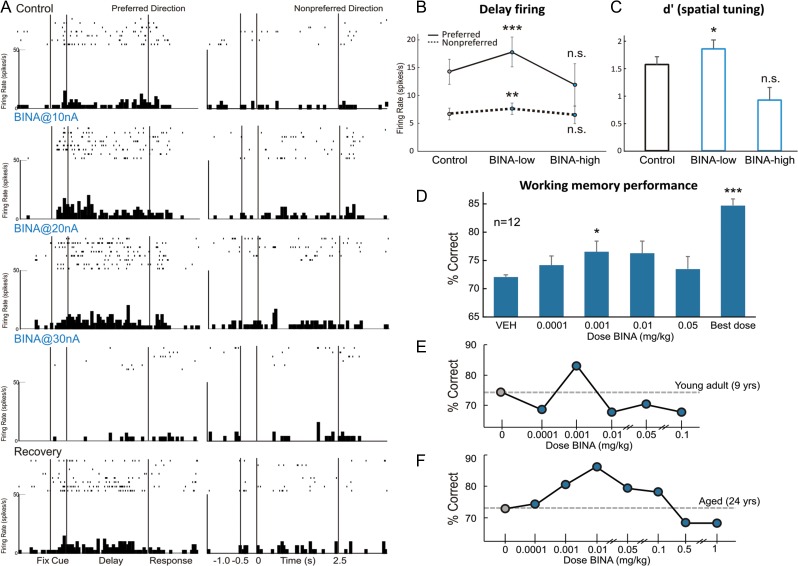Figure 9.
mGluR2 stimulation with BINA has an inverted-U dose–response effect on Delay cell neuronal firing rates, d′ measures of Delay cell spatial tuning, and working memory performance in monkeys. (A) Example of a Delay cell where iontophoresis of low doses of BINA (10 and 20 nA) increased Delay cell firing, whereas a higher dose of 30 nA greatly reduced the firing. Neuronal firing recovered to control levels after drug washout. (B) The averaged neuronal firing rate during the delay epoch for the population of Delay cells under Control, BINA low-dose condition (5–40 nA), and BINA high-dose condition (50–100 nA). Averaged firing rate is shown for the neurons’ preferred direction (solid line) and a representative nonpreferred direction (dashed line); mean ± SEM. Low doses increased while higher doses reduced Delay cell firing. (C) The averaged d′ measure of spatial tuning for neuronal firing during the delay epoch for the population of Delay cells under Control, BINA low-dose condition (5–40 nA), and BINA high-dose condition (50–100 nA); mean + SEM. Low doses improved while higher doses reduced d′. (D) Average percent correct on the delayed response task following systemically administered BINA or vehicle control; mean + SEM, n = 12. BINA produced an inverted-U dose–response, with modest improvement at lower doses. (E,F) Individual examples of dose–response curves of a young adult (E) and an aged monkey (F), where BINA produced an inverted-U dose–response influence on working memory performance. *P < 0.05, **P < 0.01, ***P < 0.001, n.s. nonsignificant, compared with Control condition.

